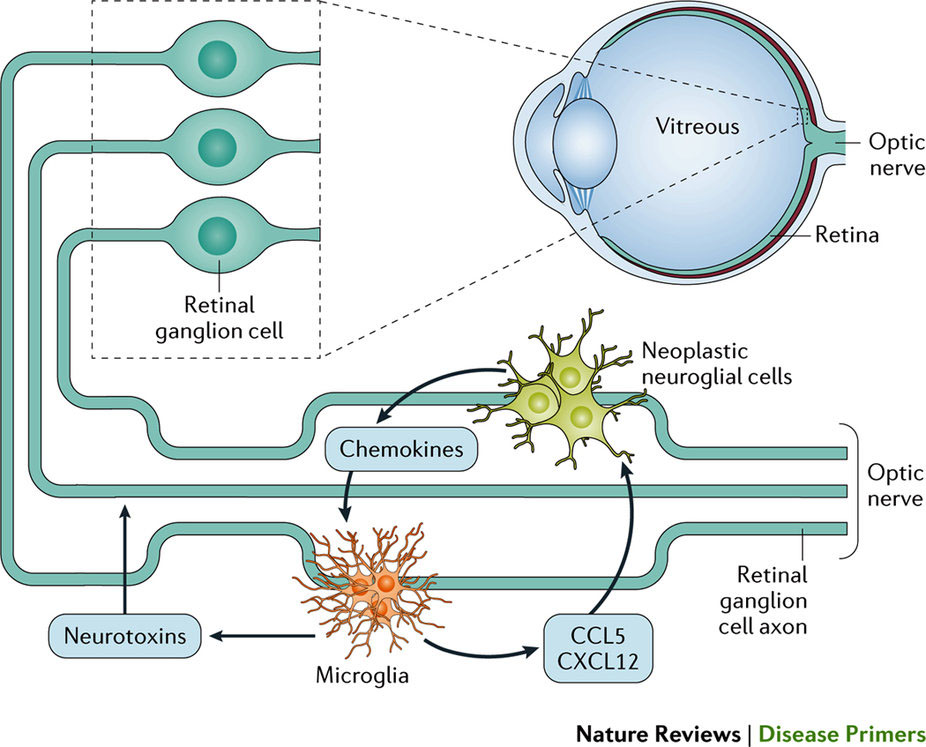神経線維腫症1型
Neurofibromatosis type 1
2017年2月23日 Nature Reviews Disease Primers Article number: 17004 (2017) doi: 10.1038/nrdp.2017.4

神経線維腫症1型は腫瘍抑制遺伝子NF1の生殖細胞変異を原因とする複雑な常染色体優性疾患である。神経線維腫症1型の患者のほぼ全てに色素斑(カフェ・オ・レ斑、skinfold frecklingおよび虹彩小結節)と皮膚神経線維腫が認められる。本疾患では、骨格異常(脊柱側弯、脛骨偽関節および軌道形成異常)、脳腫瘍(視神経路神経膠腫および神経膠芽腫)、末梢神経腫瘍(脊髄神経線維腫、叢状神経線維腫および悪性末梢神経鞘腫)、学習障害、注意欠如、QOLに悪影響を及ぼす社会的問題行動などが認められる。NF1が同定されたことに加えて、これらの臨床的特徴の一部を正確にモデル化したマウス系統を作成して前臨床試験を行ったことで、神経線維腫症1型の基礎となる分子レベルや細胞レベルでの病態生理を標的とする治療法が実施できるようになった。今のところ単一の治療法は存在しないが、本疾患の表現型の早期発見(リスクアセスメント)や生物学的標的治療などが現在の臨床管理戦略になっている。同様に、患者のQOL改善を目的とした新しい内科的介入や行動的介入も行われている。この疾患の理解は大きく深化したものの、課題も多く残されている。神経線維腫症1型患者の管理と効果的な治療法の開発には、協力的かつ学際的なアプローチが必要である。
PrimeView
神経線維腫症1型は腫瘍抑制遺伝子NF1の変異によって引き起こされる。このPrimeViewでは、皮膚、神経系および骨などの病変を含む神経線維腫症1型の臨床症状を中心に取りまとめる。
本Primerの図解サマリー
Neurofibromatosis type 1 is a complex autosomal dominant disorder caused by germline mutations in the NF1 tumour suppressor gene. Nearly all individuals with neurofibromatosis type 1 develop pigmentary lesions (café-au-lait macules, skinfold freckling and Lisch nodules) and dermal neurofibromas. Some individuals develop skeletal abnormalities (scoliosis, tibial pseudarthrosis and orbital dysplasia), brain tumours (optic pathway gliomas and glioblastoma), peripheral nerve tumours (spinal neurofibromas, plexiform neurofibromas and malignant peripheral nerve sheath tumours), learning disabilities, attention deficits, and social and behavioural problems, which can negatively affect quality of life. With the identification of NF1 and the generation of accurate preclinical mouse strains that model some of these clinical features, therapies that target the underlying molecular and cellular pathophysiology for neurofibromatosis type 1 are becoming available. Although no single treatment exists, current clinical management strategies include early detection of disease phenotypes (risk assessment) and biologically targeted therapies. Similarly, new medical and behavioural interventions are emerging to improve the quality of life of patients. Although considerable progress has been made in understanding this condition, numerous challenges remain; a collaborative and interdisciplinary approach is required to manage individuals with neurofibromatosis type1 and to develop effective treatments.

